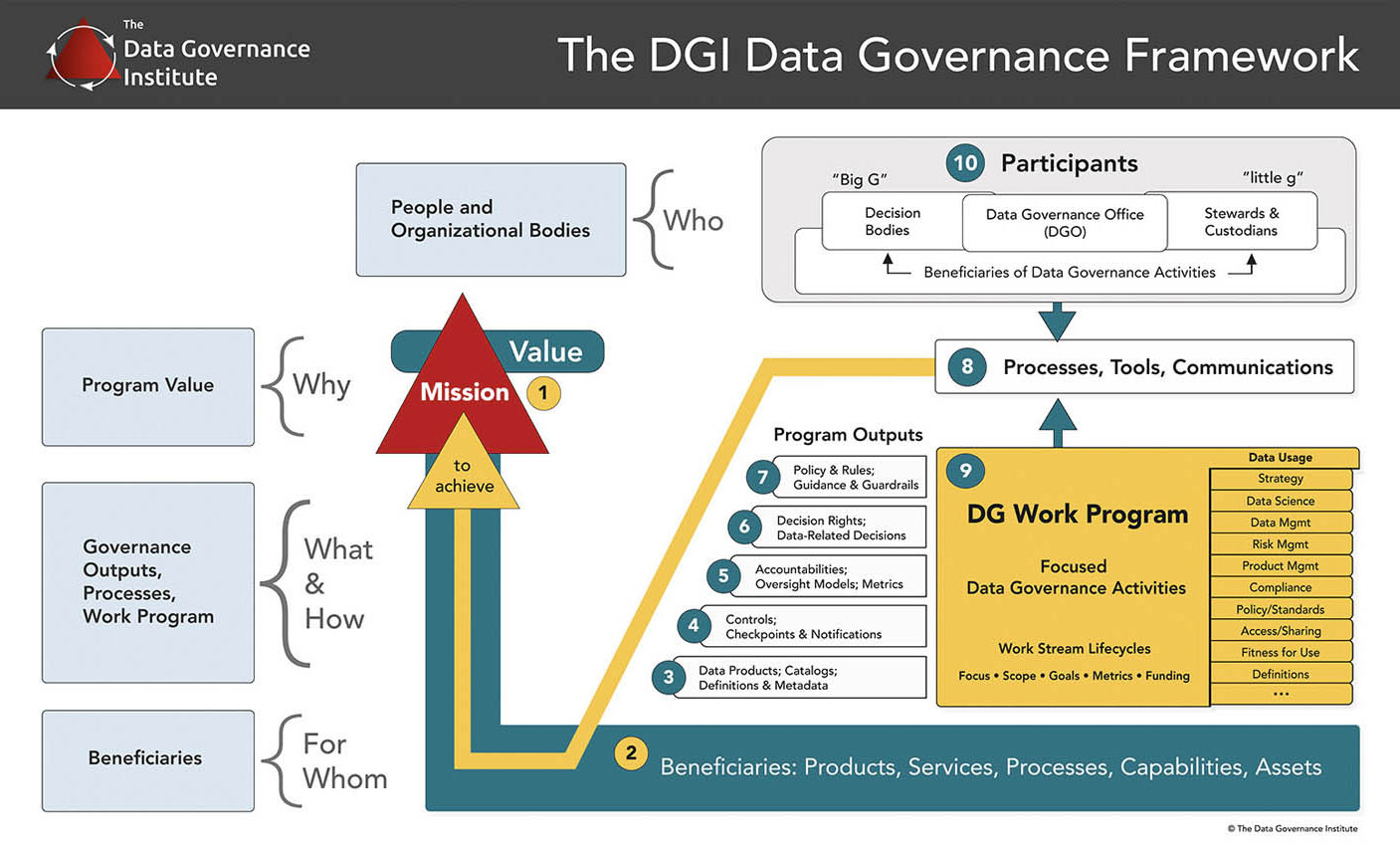The Data Governance Framework and Components
The following pages will guide you through the DGI Data Governance Framework and its components. We recommend starting with the framework, followed by the components as seen below.
The DGI Data Governance Framework
Start here to learn more about the DGI Data Governance Framework, followed by the 10 Components shown below.
DGI Data Governance Framework Components
The pages in this section describe each of the 10 universal components of a Data Governance program. Regardless of the focus of your program, it will include each of these components to some extent, although the emphasis of each component will vary according to your program’s objectives.
One way to organize these components is by looking at WHY your program exists, WHAT it is doing, WHO is involved in your efforts, and HOW they are performing processes to provide value to your organization. You can see this organization scheme in the Framework graphic.
WHY Data Governance programs exist
#1: Mission and Value
The mission of every Data Governance program should be to deliver value that … Read more
#2: Beneficiaries of Data Governance
Your program should provide value to your organization’s products, services, processes, capabilities, and assets. It does this via outputs that … Read more
Program Outputs
#3: Data Products
Most programs produce or contribute to resources such as Data Catalogs/Inventories, Glossaries with Data Definitions, and Metadata used by business and technical staff… Read more
#4: Controls
Process controls and automated technical controls are used to manage risk and increase the likelihood that established objectives and goals will be achieved. Controls can be preventative or… Read more
#5: Accountabilities
For activities that do not neatly map to departmental responsibilities, the Data Governance program may be expected to define accountabilities that can… Read more
#6: Decision Rights
Before any rule is created or any data-related decision is made, a prior decision must be addressed… Read more
#7: Policy and Rules
Data Governance programs contribute to high-level, top-down, data-related Policy. They are also expected to serve as translators between business teams, legal/compliance teams, and technical teams that must… Read more
How Outputs are Delivered
#8: Data Governance Processes, Tools, and Communication
Given the many moving parts of Data Governance, it should be no surprise to learn that Communications is essential to delivering value and having that value recognized by… Read more
#9: Data Governance Work Program
Data Governance involves a lot of moving parts. With many stakeholders expecting many outputs, most Data Governance programs employ a portfolio approach to organizing their work. Each workstream will typically have its own lifecycle, with its own focus, scope, goals, metrics, funding, and responsibilities… Read more
WHO participates in Data Governance Programs
#10: Participants
A Data Governance Office (DGO) facilitates and supports Data Governance and Data Stewardship activities. When focused on “Big G” Governance, such as high-impact decisions… Read More











